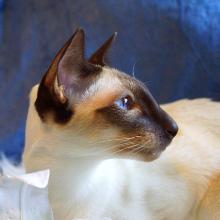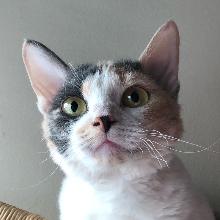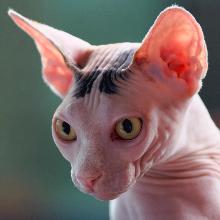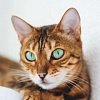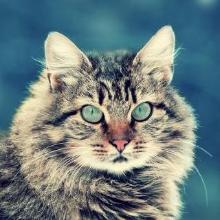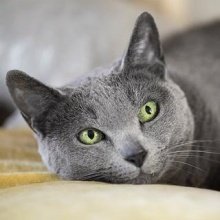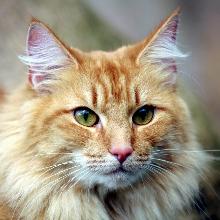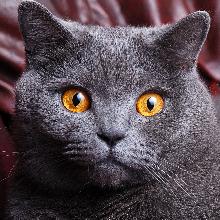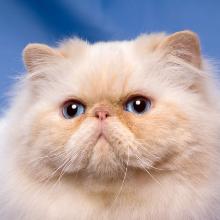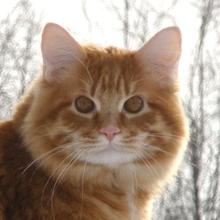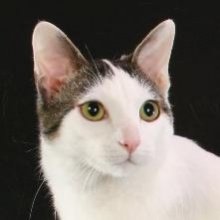Characters of cats
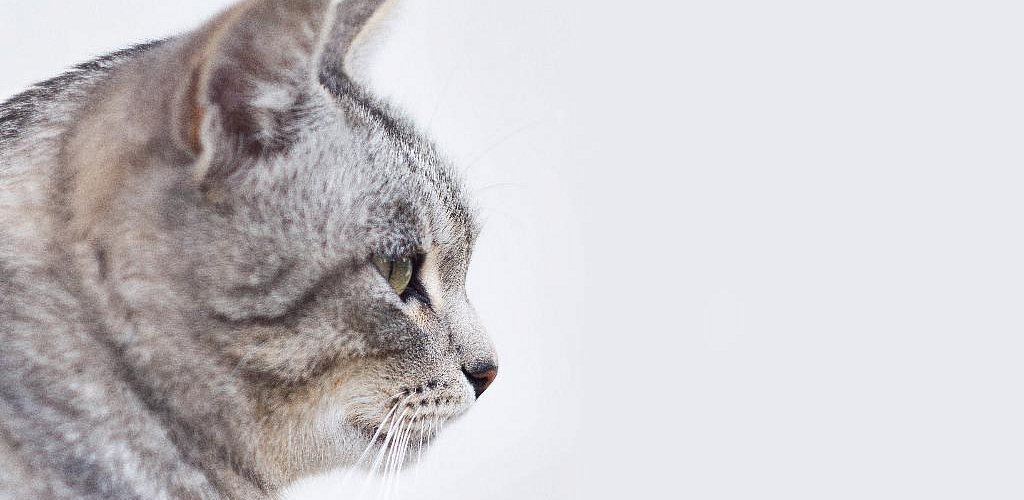
Each cat has its own unique character, however, breeders and owners of purring beauties note similar features depending on the breed and type of temperament. Some people pay attention to the zodiac sign, the color of the coat and even the nickname of the animal. You've probably ever taken psychological tests or flipped through horoscopes to learn more about yourself. What about your kitty? Or maybe knowing the characters of cats will influence the choice of a kitten?
Cat Psychology
The main feature of the psychology of cats is their independence. These pets cannot be forced to obey and execute commands. Walking by themselves, they will only do what they want themselves. Waywardness is not a disadvantage of whiskered-striped, on the contrary, cat lovers appreciate them for it. The grace, grace and soft gait of the "little tiger" have inspired artists, musicians and writers for centuries. No wonder a beautiful, spectacular woman is sometimes compared to a cat.
Despite its love of freedom, a cat is able to sincerely attach itself to a person, and the more valuable its love will be. Cats are able to react sensitively to changes in the mood of the owner and even feel his pain. Having decided to have a cute kitten in the house, we subconsciously strive to get in touch with wildlife, because a small predator can be picked up and petted.
A cat in the house is associated with comfort, well-being and happiness. A curled up, purring baby makes you distract from small problems and gives you a feeling of warmth. There are also very playful, active cats, but their whims do not cause inconvenience and are perceived as funny little pranks. In order for living together with a cat to be joyful and comfortable, your characters must be compatible – everything is like people!
Characters of cats of various breeds
The characters of cats of different breeds can be divided into 3 groups:
- sociable and companionable;
- calm and balanced;
- domineering and proud.
It is very difficult to answer the question of which character of a cat is better, it all depends on what is closer to you. Each group has its own characteristics that must be taken into account when choosing a kitten. By the way, it is in order to know what to expect from a cat in terms of character and behavior, it is better to give preference to purebred animals. Each breed is characterized by certain well-established specific features of behavior. The probability that the cat's behavior will meet expectations will be higher in pets with pedigree.
Sociable and companionable
Cats, whose characteristic feature is excessive sociability, simply adore their owners! Kotofey can spend hours with his family, keep an eye on everyone and keep up a conversation with a fervent meow – a real "soul of the company". When someone is at home, the cat does not leave him a step, rubs against his legs, lies on his hands, jumps on his shoulder. In some ways, cats of this type can even be called annoying, someone considers them annoying. But here it is important that such cats are taken into the house precisely for communication, since the presence of a person nearby is vital for these animals. They hardly experience loneliness, so they will not suit extremely busy people returning home only to sleep. In addition, sociable cats do not tolerate rough treatment, they understand only the language of affection.
The flip side of the coin is the jealousy of cats. They are so strongly attached to the owner that they do not want to share it with anyone – neither with other pets, nor with family members.
The "sociable and sociable" group includes siamese cat , german rex , canadian sphinx , oriental and bengal cats .
Calm and balanced
The calmness and poise of these cats are the result of a very stable nervous system. Animals that belong to this subgroup by nature never show aggression. Calm cats are perfect for families with young children. Affectionate and accommodating, they will never be too intrusive. Such cats do not stick to people on their own, but they will be happy to take themselves on their hands, stroke or scratch behind the ear.
However, even with such balanced cats, you need to be careful. If you hurt them, even accidentally, the result may be a sharp change in behavior – the cat will break out, try to escape and inadvertently may scratch or bite. To paraphrase the English poet John Dryden, let's say: "Be afraid of the anger of a patient cat."
In this group, the following breeds have the most accommodating character: Siberian cat , russian blue , american curl , norwegian forest , burmilla and burmese cat .
Domineering and proud
Pride, independence and authority are most often characteristic of breeds that were bred on the basis of wild cats, through direct selection. Accordingly, they have preserved natural habits from their wild ancestors, among which the desire to dominate and self-sufficiency occupy not the last place.
Co-existing with such a cat side by side even for many years, it cannot be said that it becomes completely domestic. Such cats do not tend to be strongly attached to a person. They would be offended by the definition of "our lesser brothers" – these are full-fledged and full-fledged family members, whose opinion will have to be taken into account. Cats will be complaisant and affectionate, but exactly until the moment when they themselves do not want to change mercy to anger. It is better not to start pets from this group for families with children, because it is difficult to predict the behavior of such a cat. It may simply be dangerous for a child to be near her.
On the other hand, a strong and independent cat is a great partner for busy people. She feels great alone and goes about her business. For the same reason, such a cat should be the only pet in the house – it gets along with other animals with difficulty.
The most popular representatives of this group – maine coon , british and persian cats , Kuril and japanese bobtails .
Cat temperament
In addition to what breed the cat belongs to, from birth it has a certain temperament. So, when we come to the cattery to choose a kitten, we can notice that babies from the same litter behave differently: someone plays and frolics by themselves, someone easily makes contact and seems to say "choose me", and someone hides in a corner or behind a cat mom.
By analogy with human temperaments, cats are divided into
- choleric,
- sanguine,
- melancholics,
- phlegmatic.
Cat-choleric
Cats of the choleric type are distinguished by the desire for violent activity. They are active, prone to mood changes, react violently to new things and sounds. So, if a guest comes to the house in rustling clothes, the cat will not calm down for a long time. The cat can express its surprise with loud meowing and even growling.
A choleric cat will never tolerate offense and will not restrain his emotions. He will immediately fight back with his paw or bite his opponent, and it does not matter whether it is a person, a dog or another cat. Such a fluffy is suitable for a host who leads an active lifestyle and is himself distinguished by an explosive temperament. If there are small children in the family, you will have to be very careful with such a cat, you don't always know what to expect from her.
Sanguine cat
A sanguine cat is perfect for home. She quickly gets used to the new environment, gets along with other pets and loves children very much. Once in the house, the kitten quickly adapts and begins to explore the room, will not hide in corners. Sanguine people are playful and active, but not excessively.
But how to get a cat with such a great character? When examining kittens at the breeder, pay attention to the kids who are more calm than the rest. The sanguine cat has a strong physique, will easily make contact with you, while not squeaking or screaming for too long.
Phlegmatic cat
Phlegmatic cats are distinguished by calmness and slowness. The pet will not actively demonstrate its emotions and rush around the apartment, rather it can be called closed, restrained, balanced. A phlegmatic cat will feel comfortable even in a small apartment, where she can sleep almost all day. If you want to play with her, the cat will most likely just watch your attempts.
A cat of this type is perfect for elderly people, workaholics absent from home and lovers of passing the time on the couch. The weak point of phlegmatics is a tendency to obesity, which is a consequence of low activity. It is important to monitor the cat's nutrition and buy new toys that will help to stir it up.
Melancholic cat
Vulnerable and sensitive melancholic cats are characterized by increased anxiety. They are easily offended, they are afraid of strangers, they get used to new furniture in the house for a long time. In no case should you shout at a melancholic kitty, much less punish her physically. Talk to your beauty daily in a calm voice and stroke her.
The big plus of these cats, which covers all the disadvantages, is endless devotion and love for a person. They can be called monogamous. The owner becomes their friend for life.
The character of the cat and the cat after castration and sterilization
Owners of neutered and sterilized cats and cats note that after undergoing surgery, their pets have become more calm and balanced. Since cats and cats do not seek to find a partner, they do not run away from home and do not arrange cat "concerts". Animals show great complaisance and affectionateness, the level of their activity may decrease.
However, do not expect drastic changes in the nature of a sterilized cat or a neutered cat. Unaccustomed to the scratching post, pets continue to tear up furniture, and angry fuzzies continue to hiss and scratch. But the kind-hearted cats will definitely keep a positive attitude and will not sharpen their teeth on the owners.
